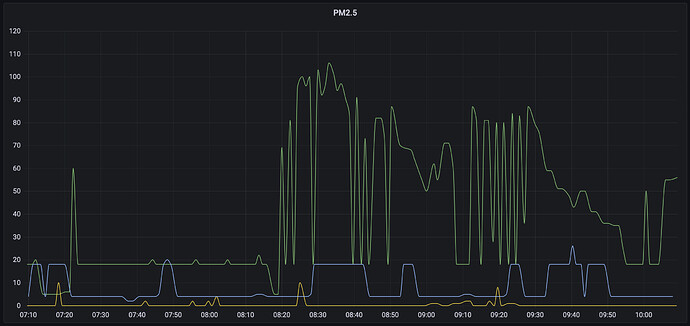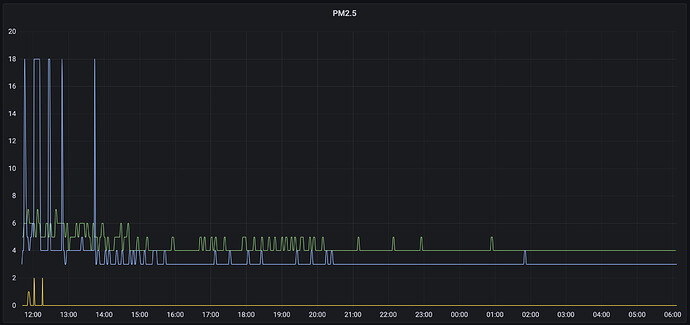I have a few OG DIY basic kits that I have been using since 2021 when Air Gradient first published their DIY hardware guide and I have been very happy with their performance. I recently moved one of them to my vacation home to track indoor air quality during the current smoke event (I am in the US PNW and we are getting lots of fire smoke from BC). My software setup is based on the Air Gradient software, but modified to push to my own influxDB/grafana stack. I also have one additional software change that lets me pull the values for PM2.5, PM1.0, and PM10 in a single call. I mention this just in case it is relevant to my issue.
After moving the sensor to my vacation place, I have been seeing huge spikes in PM2.5 on a semi-regular interval. This does not correlate (and is far worse) than the outside Air Quality, according to nearby PurpleAir sensors. The first image below is my indoor sensor and the second is the purple data from an outdoor sensor nearby.
My first thought was that I have something in my HVAC system (mitsubishi heat pump) causing these spikes, but I can’t really come up with a theory of what/why that would be happening. My second thought is that my PMS5003 is reporting bad values for a few readings then going back to normal.
Anything else I could be missing? Do I really have 400+ pm2.5 levels indoors? For the record, we have multiple air filtration systems running, including an IQ Air, in the same room as the air quality sensor.



